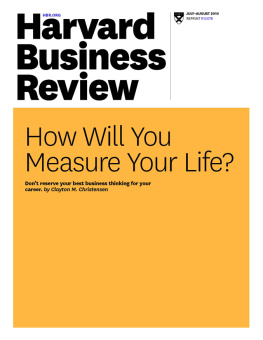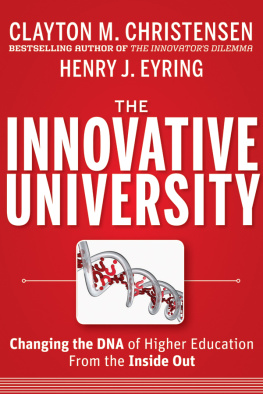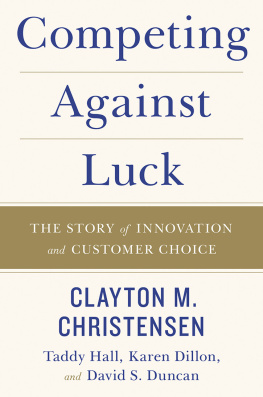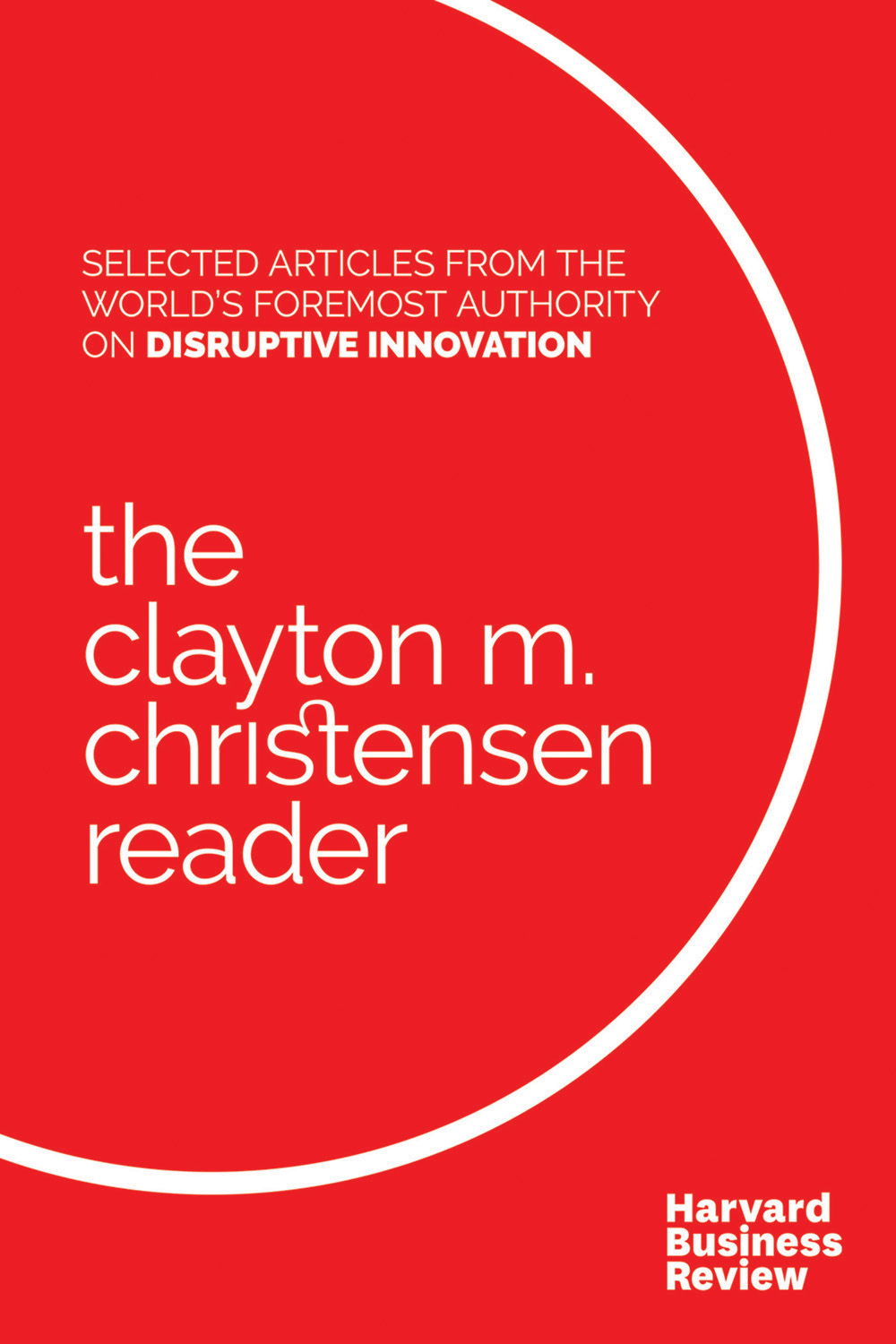Clayton M. Christensen - The Clayton M. Christensen Reader
Here you can read online Clayton M. Christensen - The Clayton M. Christensen Reader full text of the book (entire story) in english for free. Download pdf and epub, get meaning, cover and reviews about this ebook. year: 2016, publisher: Harvard Business Review Press, genre: Business. Description of the work, (preface) as well as reviews are available. Best literature library LitArk.com created for fans of good reading and offers a wide selection of genres:
Romance novel
Science fiction
Adventure
Detective
Science
History
Home and family
Prose
Art
Politics
Computer
Non-fiction
Religion
Business
Children
Humor
Choose a favorite category and find really read worthwhile books. Enjoy immersion in the world of imagination, feel the emotions of the characters or learn something new for yourself, make an fascinating discovery.

- Book:The Clayton M. Christensen Reader
- Author:
- Publisher:Harvard Business Review Press
- Genre:
- Year:2016
- Rating:4 / 5
- Favourites:Add to favourites
- Your mark:
The Clayton M. Christensen Reader: summary, description and annotation
We offer to read an annotation, description, summary or preface (depends on what the author of the book "The Clayton M. Christensen Reader" wrote himself). If you haven't found the necessary information about the book — write in the comments, we will try to find it.
The best of Clayton Christensens seminal work on disruptive innovation, all in one place.
No business can afford to ignore the theory of disruptive innovation. But the nuances of Clayton Christensens foundational thinking on the subject are often forgotten or misinterpreted. To achieve continuing growth in your business while defending against upstarts, you need to understand clearly what disruption is and how it works, and know how it applies to your industry and your company. In this collection of Christensens most influential articlescarefully selected by Harvard Business Reviews editorshis incisive arguments, clear theories, and readable stories give you the tools you need to understand disruption and what to do about it. The collection features Christensens newest article looking back on 20 years of disruptive innovation: what it is, and what it isnt.
Covering a broad spectrum of topicsbusiness model innovation, mergers and acquisitions, value-chain shifts, financial incentives, product developmentthese articles illuminate the impact and implications of disruptive innovation as well as Christensens broader thinking on management theory and its application in business and in life.
This collection of best-selling articles includes: Disruptive Technologies: Catching the Wave, by Joseph L. Bower and Clayton M. Christensen, Meeting the Challenge of Disruptive Change, by Clayton M. Christensen and Michael Overdorf, Marketing Malpractice: The Cause and the Cure, by Clayton M. Christensen, Scott Cook, and Taddy Hall, Innovation Killers: How Financial Tools Destroy Your Capacity to Do New Things, by Clayton M. Christensen, Stephen P. Kaufman, and Willy C. Shih, Reinventing Your Business Model, by Mark W. Johnson, Clayton M. Christensen, and Henning Kagermann, The New M&A Playbook, by Clayton M. Christensen, Richard Alton, Curtis Rising, and Andrew Waldeck, Skate to Where the Money Will Be, by Clayton M. Christensen, Michael E. Raynor, and Matthew Verlinden, Surviving Disruption, by Maxwell Wessel and Clayton M. Christensen, What Is Disruptive Innovation? by Clayton M. Christensen, Michael E. Raynor, and Rory McDonald, Why Hard-Nosed Executives Should Care About Management Theory, by Clayton M. Christensen and Michael E. Raynor, and How Will You Measure Your Life? by Clayton M. Christensen.
|The best of Clayton Christensens seminal work on disruptive innovation, all in one place.
No business can afford to ignore the theory of disruptive innovation. But the nuances of Clayton Christensens foundational thinking on the subject are often forgotten or misinterpreted. To achieve continuing growth in your business while defending against upstarts, you need to understand clearly what disruption is and how it works, and know how it applies to your industry and your company. In this collection of Christensens most influential articlescarefully selected by Harvard Business Reviews editorshis incisive arguments, clear theories, and readable stories give you the tools you need to understand disruption and what to do about it. The collection features Christensens newest article looking back on 20 years of disruptive innovation: what it is, and what it isnt.
Covering a broad spectrum of topicsbusiness model innovation, mergers and acquisitions, value-chain shifts, financial incentives, product developmentthese articles illuminate the impact and implications of disruptive innovation as well as Christensens broader thinking on management theory and its application in business and in life.
This collection of best-selling articles...
Clayton M. Christensen: author's other books
Who wrote The Clayton M. Christensen Reader? Find out the surname, the name of the author of the book and a list of all author's works by series.





